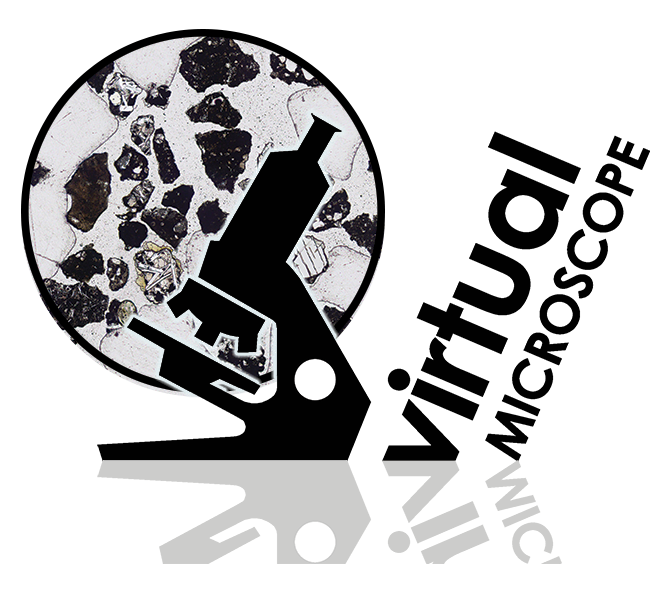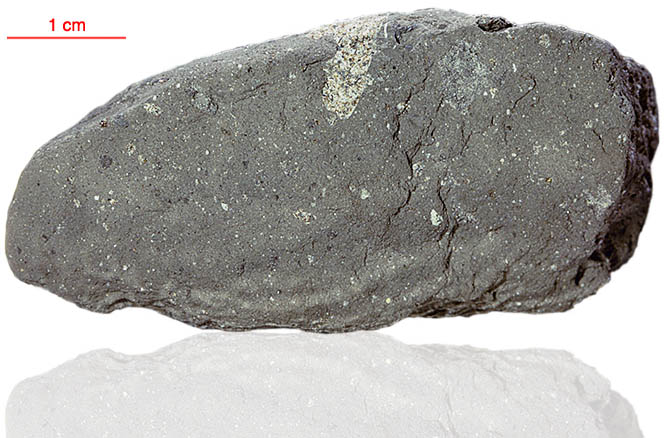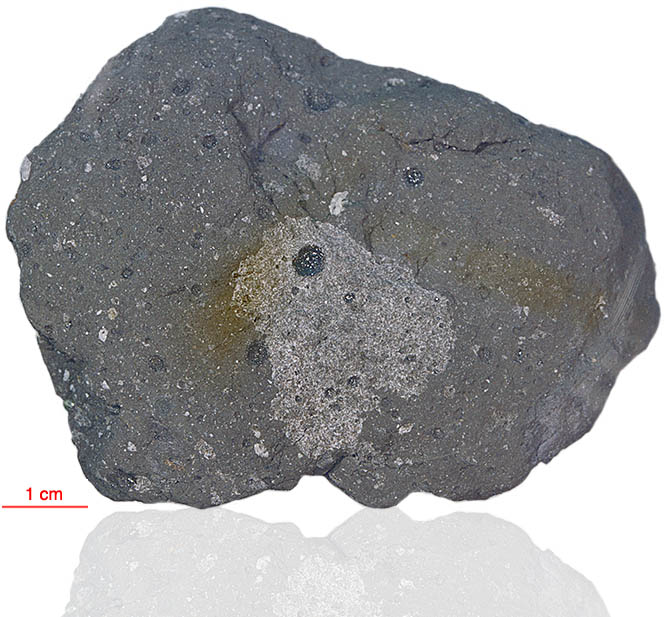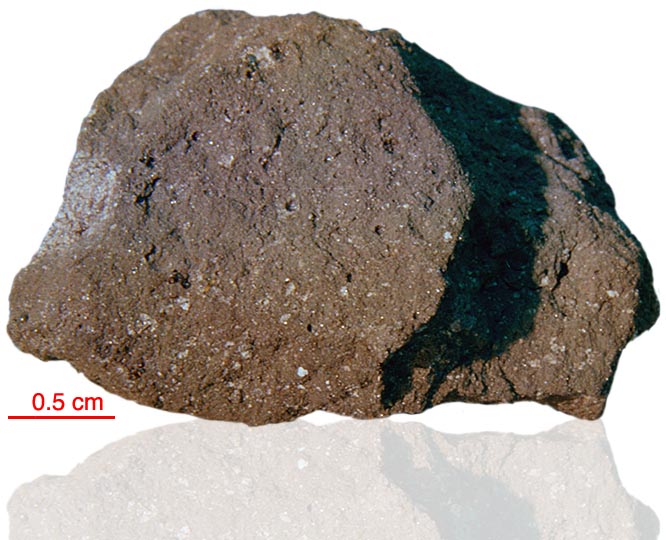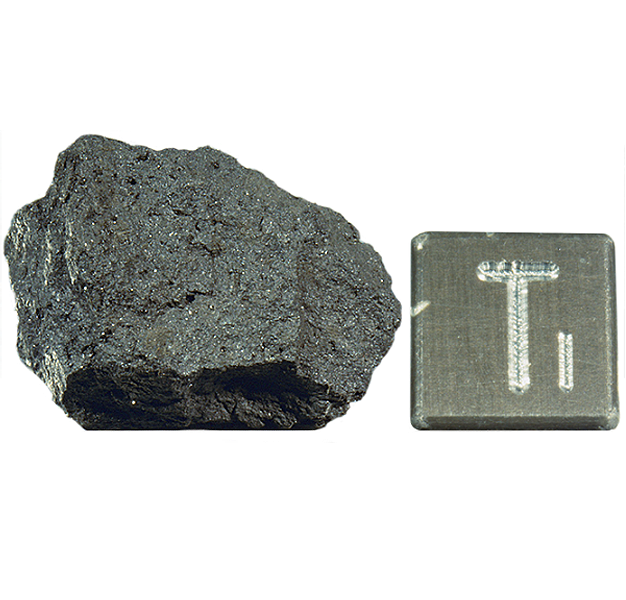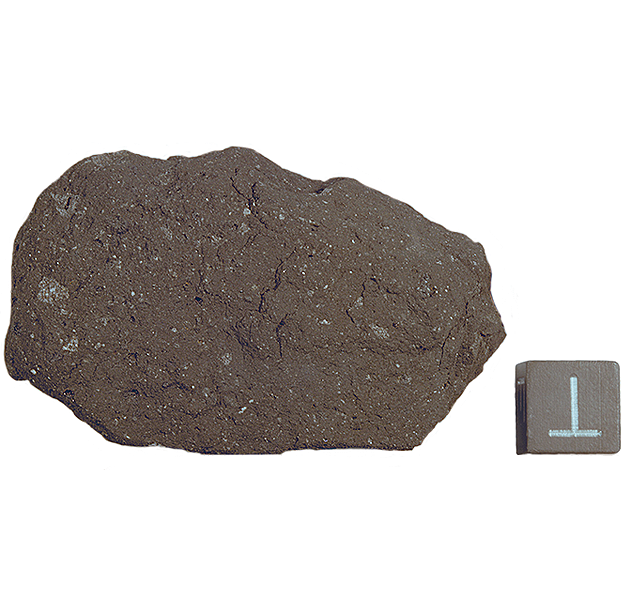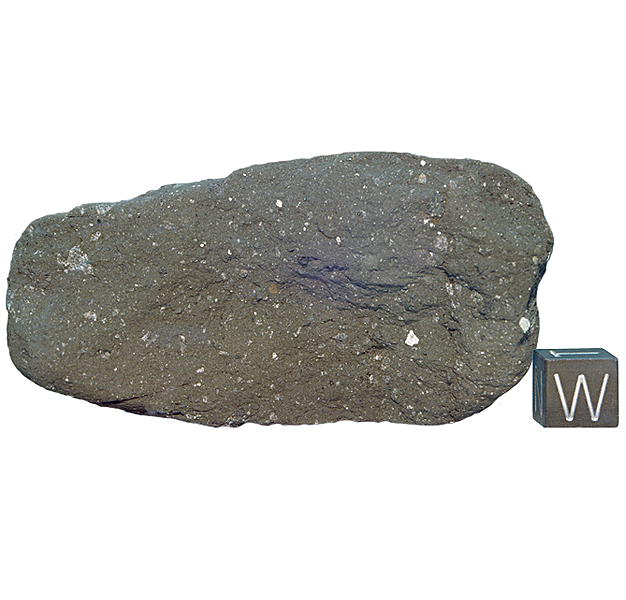
Fact sheet
Sample 10060 is one of the largest and best studied lunar breccias. A high percentage of it is derived from soil at the Apollo 11 landing site. One side of the sample is covered with glass-lined micrometeorite pits. It is porous (indicating it was gas-rich) with micron-sized intergranular voids that can best be seen in reflected light or using a scanning electron microscope. It has an abundance of glass of various types and stages of devitrification.
In thin section, basaltic fragments are the predominant clast type in 10060. One of the largest basaltic clasts (termed a vitrophyre) contains well-formed pyroxene phenocrysts, olivine, bladed ilmenite, and small amounts of bladed armalcolite set in a groundmass of basaltic glass with feathery pyroxene. Gabbroic anorthosite clasts have also been recorded in this sample. The large armalcolite grains appear to have reacted with the melt, forming ilmenite at the rims.
Further details of this and other Apollo samples are here: http://curator.jsc.nasa.gov/lunar/
The Apollo 11 samples create an iconic collection since they were the first rocks collected by humankind that were returned to Earth from another solar system body. The Apollo 11 team collected and returned 22 kg of rock and soil samples.
Apollo 11 launched from Cape Kennedy on 16 July 1969. An estimated 530 million people watched Armstrong's televised image and heard his voice describe the event as he took "...one small step for a man, one giant leap for mankind" on 20 July 1969.

